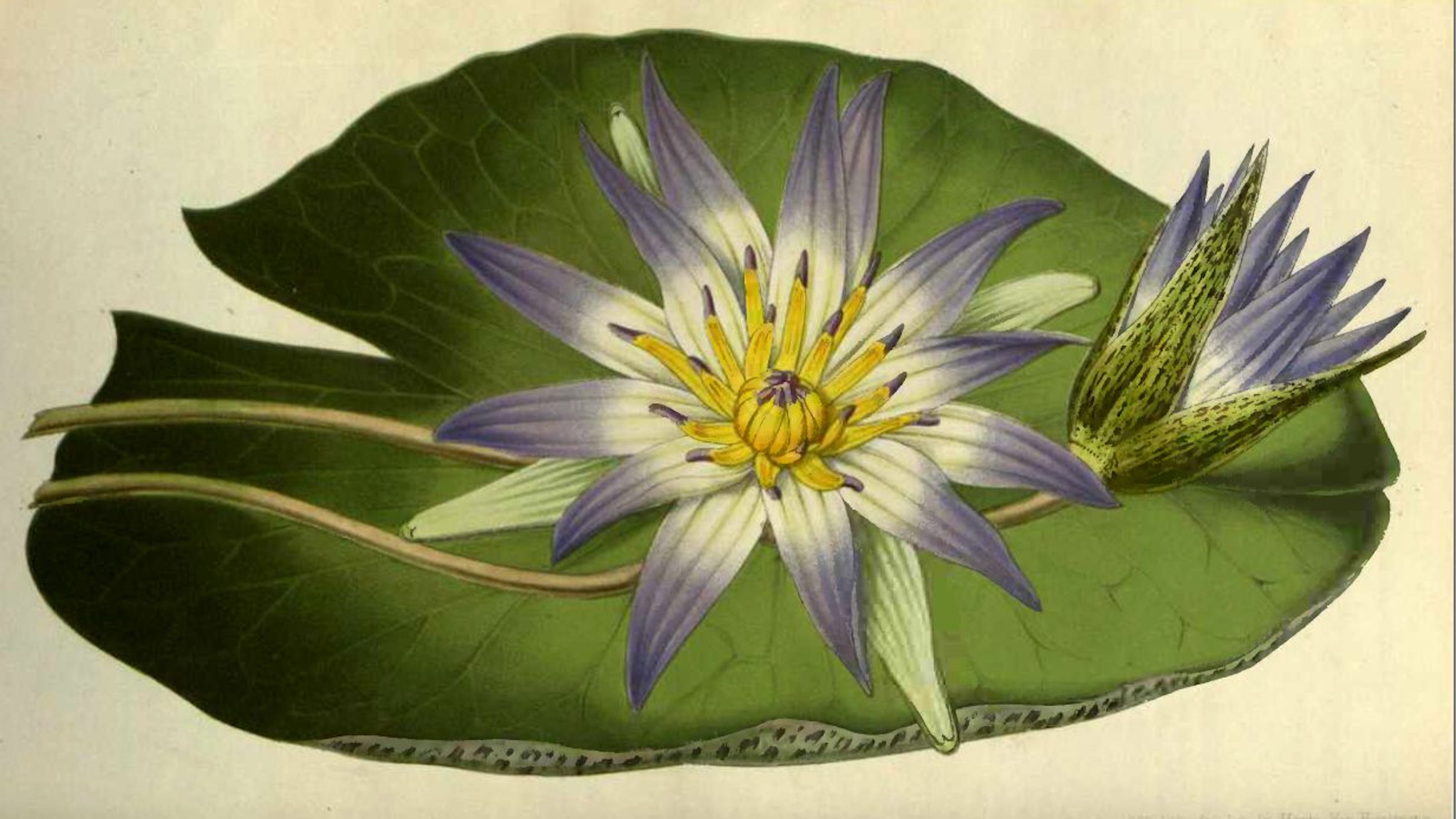Anthropology
Related: About this forumThe wild psychedelic origins of indigenous mystical rites -- as revealed by archaeology
THE PAST — MARCH 25, 2023
Brian C. Muraresku, New York Times best-selling author of "The Immortality Key," unpacks ancient evidence for the widespread ritual use of psychoactive plants.

blue water lily illustration
Credit: Louis van Houtte (1810-1876) / Public domain / Wikimedia Commons
KEY TAKEAWAYS
The nascent field of archaeochemistry has furthered our understanding of the psychedelics used by ancient indigenous populations. Evidence of ritual hallucinogens can be seen in ancient cave art as well as in residues in shrines and shell cups. Psychedelics appear to be inseparable from the universal religious heritage of humankind.
Brian C. Muraresku
We’ll never know when and where humans first discovered the mind-altering power of psychedelics. But it seems fair to state three things about our relationship with visionary drugs: it’s incalculably old, globally pervasive, and rich with meaning. Our ancestors likely began their long journey with naturally occurring psychotropic substances tens or even hundreds of thousands of years ago.
The nascent field of archaeochemistry has convincingly demonstrated Neanderthal use of psychoactive plants like yarrow and chamomile going back 50,000 years. Anthropologist Scott M. Fitzpatrick envisions the early hunter-gatherers of our own species encountering, consuming and experimenting “with a wide array of plants” and fungi — just like their Neanderthal cousins.
A generation ago, Terence McKenna famously introduced the Stoned Ape Theory, proposing an evolutionary advantage for a diet of psilocybin-containing mushrooms across the African savannas — not merely hundreds of thousands, but millions of years in our hominin past, prompting the development of proto-language, creativity, and religious insight well before the Neanderthals. Only now are scholars, like paleoanthropologist Lee Berger in South Africa, seriously investigating the bold claim.
As humans spread across the planet, the psychedelic pharmacopeia (record of medicinal drugs) grew. “Few areas of the globe lack at least one hallucinogen of significance in the culture of the inhabitants,” says Plants of the Gods: Origins of Hallucinogenic Use. This classic study by Harvard ethnobotanist Richard Evans Schultes and LSD discoverer Albert Hofmann, originally published in 1979, is something of a bible for amateurs and professionals alike.
More:
https://bigthink.com/the-past/psychedelic-origins-mystical-rites-religion/
Haggard Celine
(17,334 posts)I think it's what's missing in our lives, possibly the source of psychological maladies and rampant violence. Sharing a trip with a good friend is life-changing. It can relieve a lot of anxiety and usher in a way to commune with the cosmos.
NJCher
(40,838 posts)Need to take mushrooms.
Haggard Celine
(17,334 posts)NJCher
(40,838 posts)Problem in one fell swoop.
On a different topic, a person can get their brain in this condition without mushrooms. However, it is much easier to do it with this substance.
It takes years to do it without it, but there are many health and well being reasons to do it the slower way. For example, it makes one more relaxed and makes it easier to control stress. It also makes a person happier.
Robert Monroe invented binaural beats, which later became hemisync. This, too, shortens the time it takes to get your brain in this condition. He wrote three books about his experiences. I have two in ebook form and one in hard copy which I’m reading right now. I read them decades ago, but I am now re-reading them.
Haggard Celine
(17,334 posts)I’ll look that up, for sure! I eat gummies, but it would save a lot of money if I could do without them.
BComplex
(9,498 posts)The whole world would benefit if their sort could truly experience some good mushrooms!
NJCher
(40,838 posts)They’re so devoted to now.
tanyev
(47,281 posts)wnylib
(25,316 posts)All my chamomile tea does is put me to sleep, without psychedelic dreams.